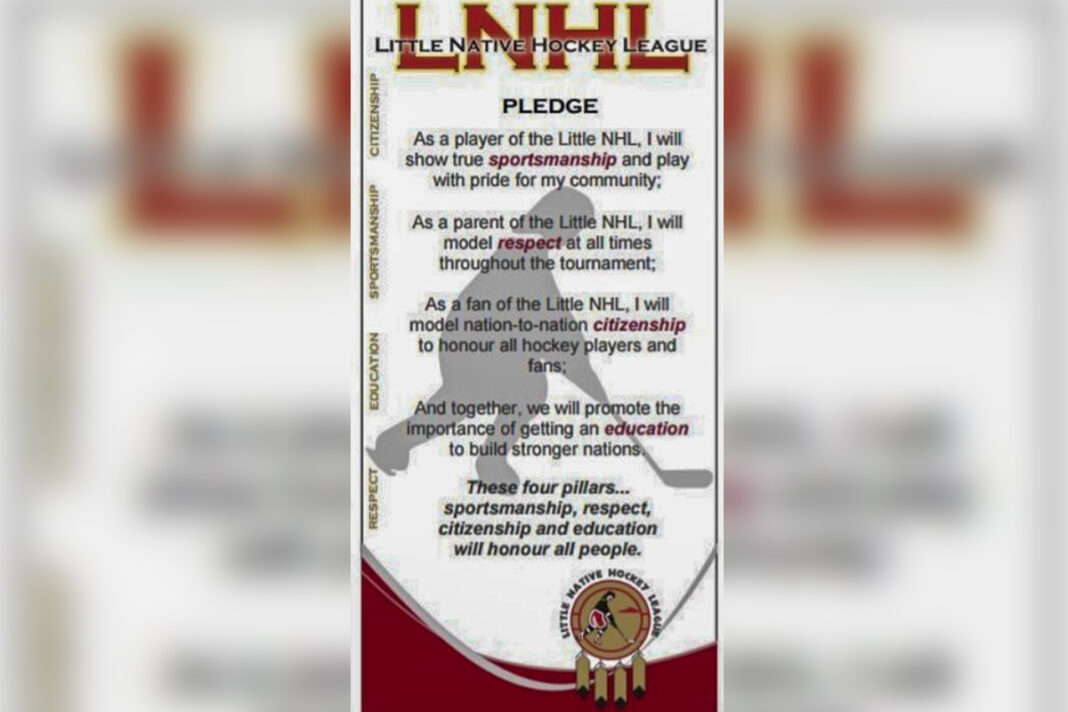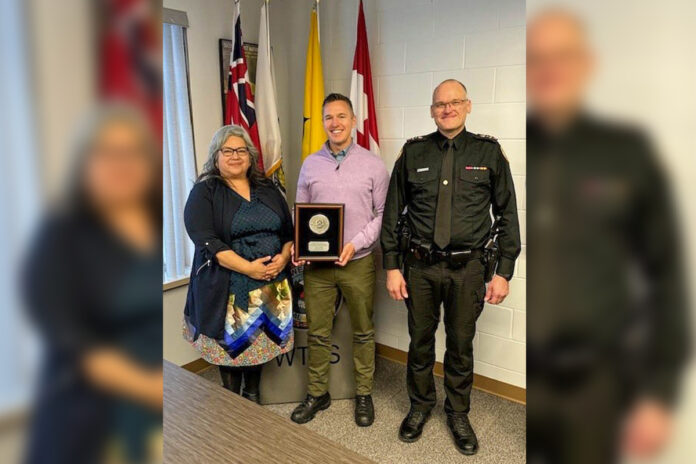EDITOR’S NOTE: This year marks 50 editions of the culturally important Little NHL (Native Hockey League) tournament and, over the weeks leading up to the Markham event, Expositor reporter Gina Gasongi Simon will trace the evolution of the tournament from its origins as a two-day local event in 1971 at the old Little Current arena to the massive undertaking it is today with nearly 250 teams participating from all corners of the province. This week’s installment, the third, examines the fond memories of players and their families.
by Gina Gasongi Simon
Money is a big requirement for Indigenous children and First Nation communities to participate in one of the most expensive sports due to the high cost of equipment, ice time, rink rentals and travel. To get to the Little Native Hockey League (LNHL) requires all hands-on deck, from every community member, parents, grandparents and extended family. Each has gone the extra mile, acting as one entity to raise enough funds for every child who wants to participate, from Tykes to Midgets.
“Come near LNHL time, it was in the air, the entire community gathered, parents and managers helped in fundraising efforts,” said longtime player and coach Roger Beaudin of M’Chigeeng First Nation. “We never depended on anyone or the First Nations leadership to pay. Each community did their own fundraising efforts.”
He recalls one year when it became a community effort. “We joined forces and put on a ‘monster bingo’ with big prizes, bottle drives, 50/50 draws and bake sales. All parents participate and do their part to assist where they can, with the support of their families.”
The LNHL was formed in 1971 on Manitoulin Island, and the NHL National Hockey League in 1917 in Montreal; the irony—the costs and benefits to the smaller league are spread throughout, while the larger league has a small circle of incorporated benefactors. After the top-heavy payouts very little trickles down to the communities or children.
We all know that behind the scenes, matches and showdowns of the LNHL are hidden stories. Stories that go beyond the scores and statistics and play-by-play. Stories that capture the passion and pain, desire and dedication.
“We have been fortunate in our desire to play and support the cause is like one big family,” Mr. Beaudin says. “We sacrificed space and time, and it wasn’t unusual to have numerous kids sharing a hotel room with a chaperone or two.”
Mr. Beaudin recalls playing in the LNHL in Sudbury. “We all stayed on the high school gymnasium floor in Lively, on the outskirts of Sudbury. We didn’t get much sleep, as there was always someone waking everyone up, but I remembered laughing a lot.”
Take the parents’ view, all those hockey dads and moms. Both create traditions and checklists with their children. Most agree it’s a fine line within Anishnaabe family tradition as to who does what. Traditionally, for the most part, it’s the moms who prepare the meals, make the checklists, pack the lunches and prepare the snacks. Packing was another big chore, extra socks, warm clothes, and bathing suits were a must, along with all the hockey gear.
The dads, for the most part, are coaches and drivers, bringing pop and snacks between games and keeping the team in tow. In the changing rooms, both parents make sure every child’s skates are tied tight, helmet on and a hockey stick in hand before stepping on the ice. Both stand screaming in the stands, cheering on their little stars; and we can agree both parents’ roles can be fun and demanding.
It’s fascinating when you think about it—it’s like packing for a portable modern-day camping trip to the city. Coolers and sleeping bags are a must for hockey tournaments, as you don’t always have private accommodations, nor access or the energy to go to the grocery store, let alone know where one is located. To pack for a tournament is a true art of packing as many extra and activities as you can, along with extra kids and all the hockey equipment.
It’s not just a family affair, it’s a community affair with lots of memories. “Before we could afford buses, parents would volunteer. I was fortunate my older brother was my coach, so I rode with him. It was, and still is, a big deal to go to the city and play hockey. We played in Parry Sound one year and I remember, as we drove out of town, there was a sign at the local Kentucky Fried Chicken, ‘Closed: out of chicken.’ Us kids, along with our parents, we sure had a good laugh about that,” Mr. Beaudin laughs.
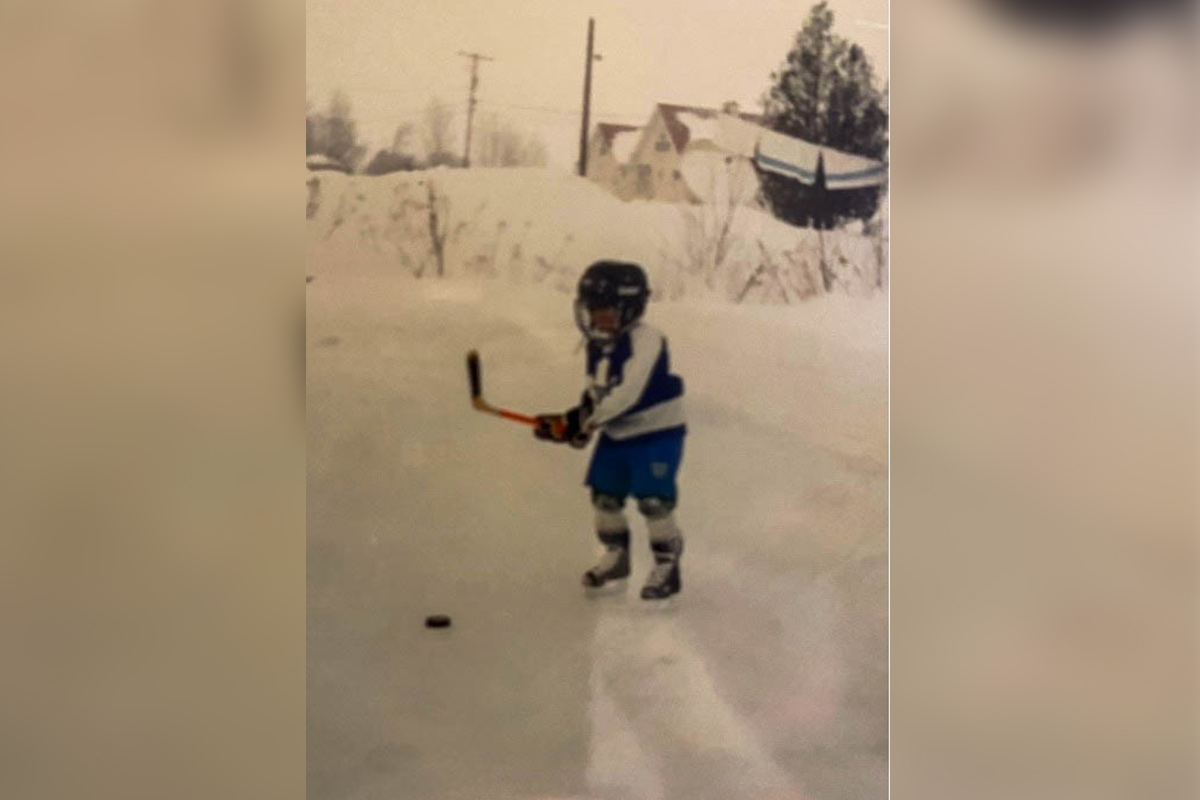
According to LNHL president Chico Ralph, the city of Markham stands to make millions in revenue from the tournament.
Not only do people prepare and fundraise the whole year to come to the tournament, but “they also save to shop,” says executive member Pat Madahbee. “I’ve heard of people while down for the LNHL buying a new truck or car. So, you just never know what people will buy or how much they will spend because the quality of choice and quantity is there for the pickings,” he explains.
Another notable story from the late ‘90s was a final Pee Wee game in Peterborough. “It was a real nail biter, right down to the final goal,” Mr. Beaudin shares. “We always had a rivalry between Wikwemikong. This particular year we made a team combined with players from M’Chigeeng and Whitefish. In the end we ended up in a tie. So, after so many ties, it was decided to remove one player every two to three minutes from the five-player line-up. It came right down to one player and a goalie left on each side. Call it the luck of the draw, but when the referee dropped the puck it bounced, our player got to it first and sailed down the ice on a break-a-way and scored the tie breaking goal. Our team went wild, as we skated on the ice and all piled onto our goalie, Lisa Corbiere Addison.”
“She stole the show, goal after goal. Lisa played her heart out,” Mr. Beaudin continues. “She was dynamic. She played with us all through the regular season, so of course she was coming with us to the LNHL. It was a bittersweet victory, even with Wikwemikong missing some of their top players due to a suspension. We had some good players, like Garnet Ace who went on to play for the Sudbury clubs and is now a scouting agent.”
So, there are doors of opportunity after playing in the LNHL. Whether watching or coaching you marvel at the skill of the players. “Some of the kids that play in the tournament are phenomenal,” Mr. Beaudin continues. “Take Samuel Assinewai, from AOK. He was always one of our fastest and smartest players. He played for the Sudbury clubs, and went on to play for the Flint Firebirds, much like Junior A tier of the OHL.”
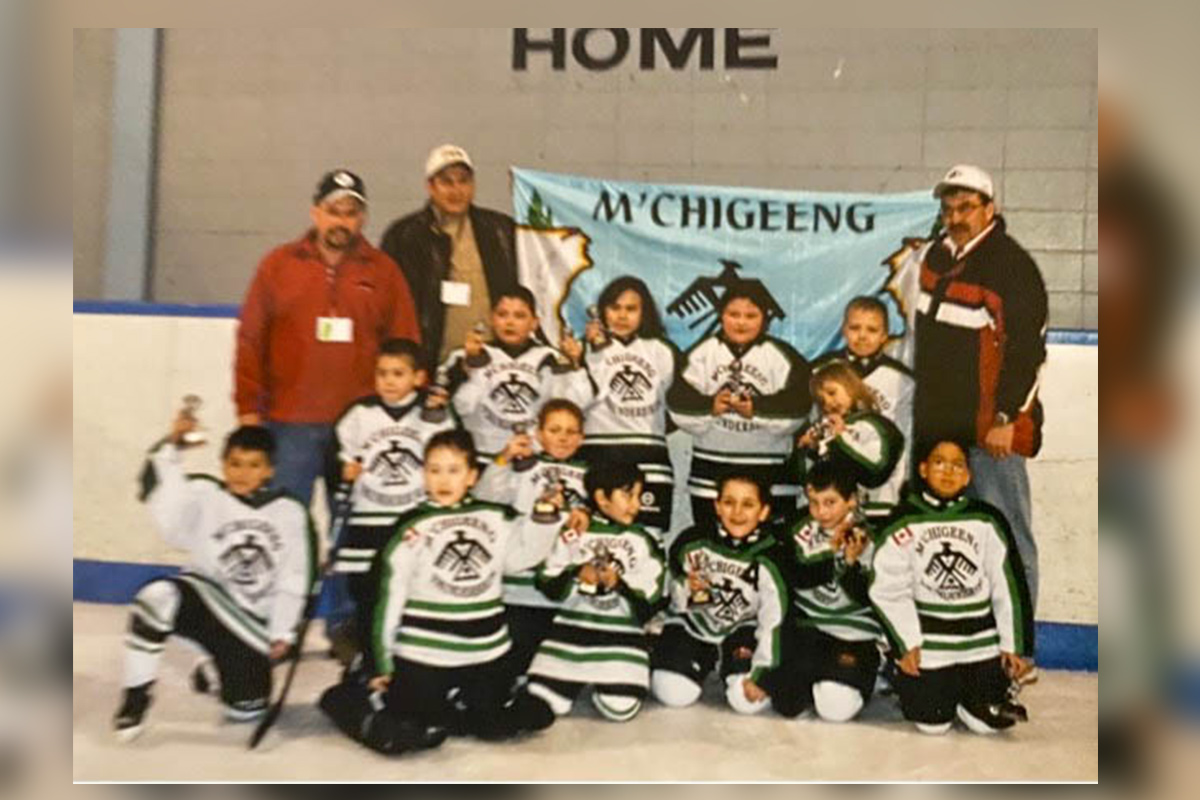
To play at the LNHL in an arena that has a capacity to accommodate more than two or three entire First Nation communities in its stands and ice surface is like a dream for the kids.
The atmosphere in the arenas is something you can’t describe, you have to be there, says Mr. Beaudin. “We have our cheering sections, loud and proud, and as the games wind down to the finals, everyone is cheering, for every goal scored. It thunders.”
Developing very strong friendships with other hockey parents, grandparents and coaches is formed fundraising, coaching, carpooling and joining the ‘fan ship.’
Taking place over the 2024 March break, the annual hockey tournament is an opportunity to see and experience new things that are synonymous with family time. “It’s part of our calendar of events,” says Mr. Beaudin. “We go there to celebrate our love for the game of hockey and family. It’s ingrained in our psyche.”
The Cultural Festival portion of the LNHL to celebrate the 50th anniversary on opening night March 10 promises to be spectacular. “Each host community, over the years, has done a magnificent job to make opening ceremonies special.” Mr. Madahbee recalls one year, “Fort William First Nation hosted and designed this gigantic tipi. It was all lit up as it descended from high up in the arena to the arena ice, and then each side dropped down exposing a medicine wheel combined with the four sacred colours. That was a memory!”
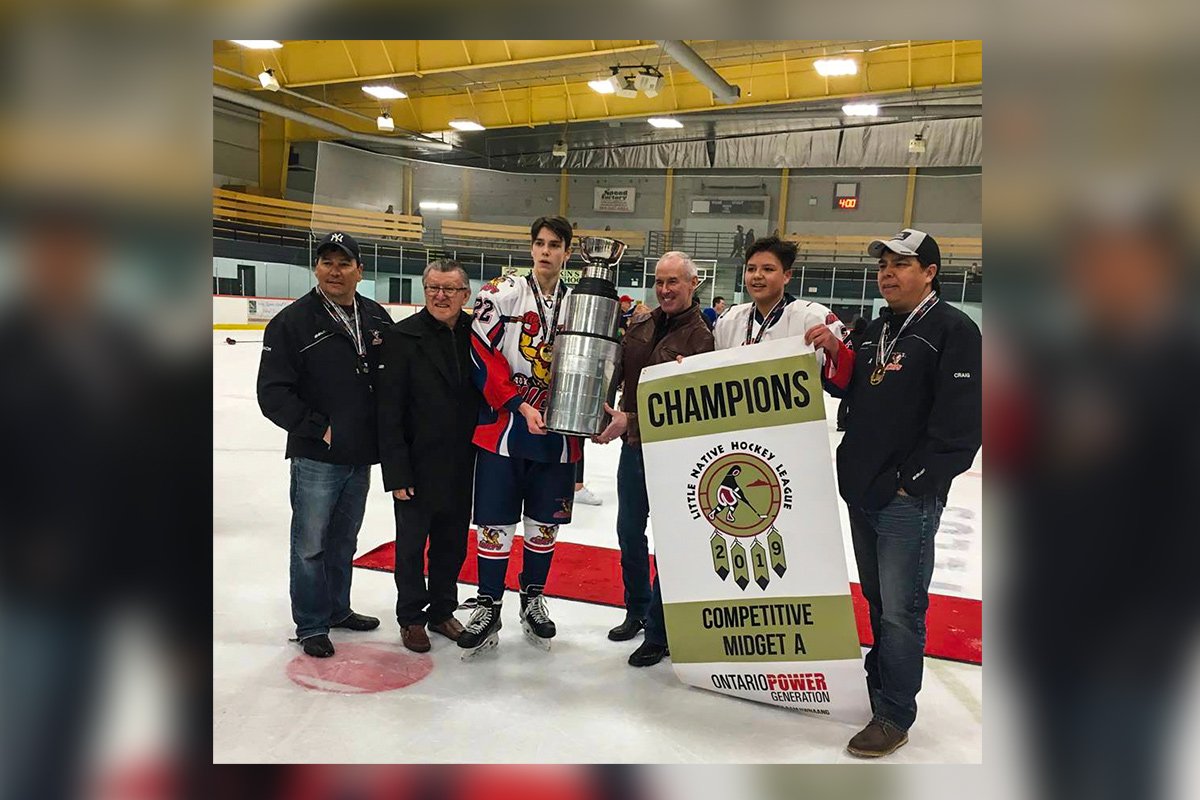
For generations, the original teachings of the Anishnaabe have contained the four sacred colours. Red represents the Indigenous peoples of the world, yellow represents people of Asian and South Asian descent; black represents the Black race and White represents the Caucasian race. Each race is said to have its significance and gifts to offer to humankind. The four colours will always be found in and about the arenas, displayed in artwork and on team flags.
Over the years, with the growth of the LNHL tournament has been the introduction of new technology and applications to help make keeping track of all the teams, players and games schedules an easier and timely process. “It’s tough to keep track of all the games and rules,” says President Chico Ralph.
“Sometimes you’re viewed as the bad guy or bearer of bad news. But rules have to be followed. In tie breakers, we now utilize the 3-on-3 stop play and if that does not result in a winner, we move to the player shoot out and then the sudden death, first goal wins,” he explains.
Keep in mind after the game the precious moments shared with the kids. Rehashing the game, memorable moments, with their emotions running high whether win or lose, you have to keep them prepared for the next game or the trip home.
“In our hearts all the kids are champions. Every kid gets a medal for participating. I remember one year handing out medals to these little novices, eight- and nine-year-olds. One kid says, ‘We got a medal and we didn’t even win!’ and his little buddy pipes in, ‘and we didn’t even score a goal!’ I told them, ‘You’re all winners and we will see you next year.’ To that they all chimed in, ‘We’ll be back! We’ll be back!’”
Games evolve and so do the players
For more information on the format, location, sponsors, games and activities visit the website at https://lnhl.ca

